Just like the birds themselves, Canada goose spreads come in all different shapes and sizes. Whether it's a big spread for West coast Cacklers, or carry in spreads for early season giants, manipulating a group of Canada Geese to "do it right" takes thought and planing. Check out these real life Canada goose spread photos for ideas on how to run your mobile decoy set up.
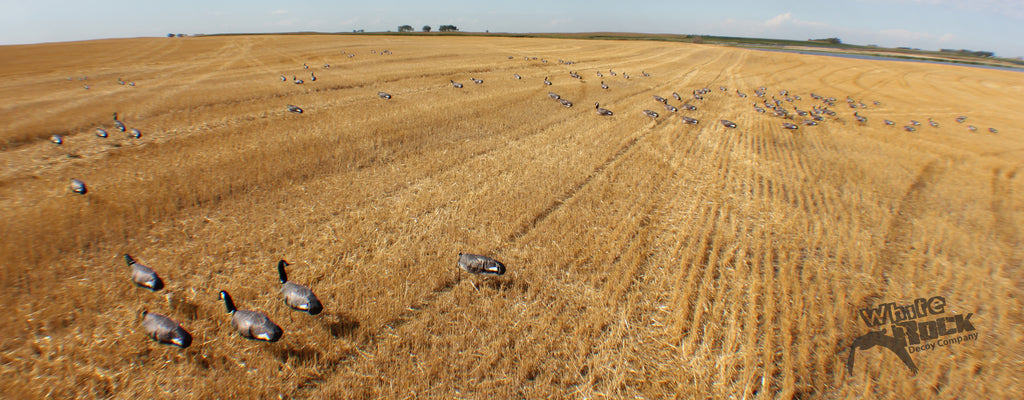
Approx. 120 decoys.
This is a great example of our typical early season Canada Goose Windsock Decoy spread. Quick and easy, you can really direct those young dumb Canadas into your lap in the right situation. If it's windy enough to center up the birds, we sit towards the bottom edge of the spread. If there is no wind, you're better off sitting in the middle of the decoys so you can take a shot out to any edge. Cluster a group of decoys around your blinds to help hide them, and spread the rest of the decoys in random family groups around you. Make sure to leave plenty of room between groups as Canadas will typically land in the open areas of the spread. You don't need to go to big or crazy with these young dumb Canadas. Emulate what you see while your scouting. If it's a hot field, just hit them with a bit of flagging and keep the calling to a minimum.
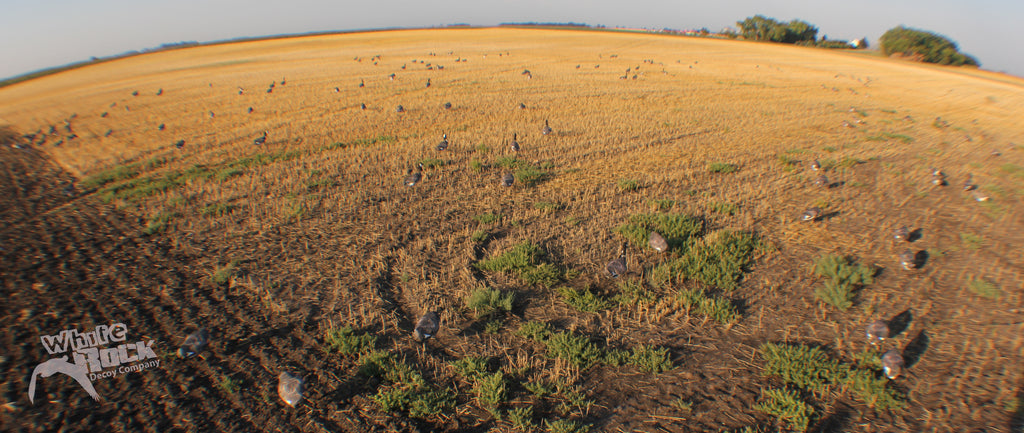
Approx. 120 decoys.
Another early season set. As we scouted this field we noted that these birds were incredibly scattered. Small groups, singles and doubles spread across a 1/4 section plot. They were coming from a roost less than a mile away, and on a string. To hide in this situation (skinny cover, minimal wind, without a big group of decoys) we ditched our layout blinds and had the 3 hunters spread out up to 30 yds apart at the very bottom edge of the spread and hide with Gillie blankets. We used the transition of the field types and the green growth to help break us up. The birds came off low, and even though each group had different locations within this field on their minds, we had guys covering all entrance routes and volleyed them back and forth a couple times.

Approx. 100 decoys.
Sand bar sets can be incredibly productive. Geese and ducks naturally use sand bars as loafing spots at all times of the year. Geese tend to spread themselves out a bit more across sand bars during the early parts of the season, which is what you're seeing here. Later in the year they'll bunch up a lot tighter. We will also use more headless windsocks later in the year to replicate sleeping geese. The best part about having a mobile windsock spread for use on the sand is you can pack an incredible number of decoys into your boat. There are times we'll bring out 500+ decoys and "fill 'er up" as they say. Birds don't see that look very often, other than in refuge areas. It's an incredibly realistic look and the drawing power is unmatched when hunting near other groups that may have 4-5 dozen floater decoys out.
To hide on a pool table flat sand bar takes some creativity. In this set you can see a log on the upper left. It's not huge but large enough to cast some shadows and help hide layout blinds. We use super low profile layout blinds in field khaki (perfect color!), pack decoys tighter around the blinds, and use blind door decoys. From 30 yds, you'd swear it was just birds sitting on a log, a natural occurrence on the sand. If you're really ambitious and need an even better hide, bring a shovel and dig your layout blinds down. This trick gets tough once the sand freezes, but it works great for the first part of the season.
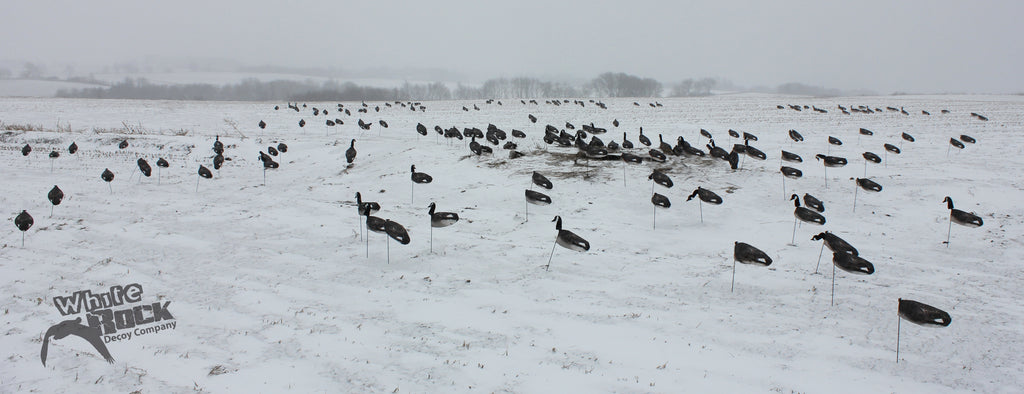
Approx. 240 decoys.
Late season Canadas in the snow is the time to throw the whole spread at them! In this hunt we were able to jump in a pit blind, which is nice when temps get into the single digits. To hide the pit openings, we grouped the decoys heavily around them. We would duplicate this grouped up look in several other pods well away from the pit, leaving large landing areas to each side. The birds were coming from all directions this day and they don't always swing and come right into the wind like a duck, so it's important to remember when running a big spread of Canadas to make room for them to land within the spread so they don't short stop or land to far out.
TIP: If you're hunting frozen ground with our windsock decoys, make sure to bring a rubber mallet for everyone in the group. A key advantage of White Rock windsock decoys are that you can pound on the top handle of the decoys and get big numbers of them in the ground faster and more efficiently than any other staked decoy out there.
Here are a few more windsock decoy spread photos.

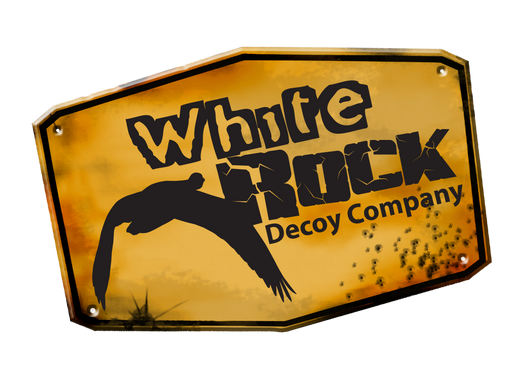


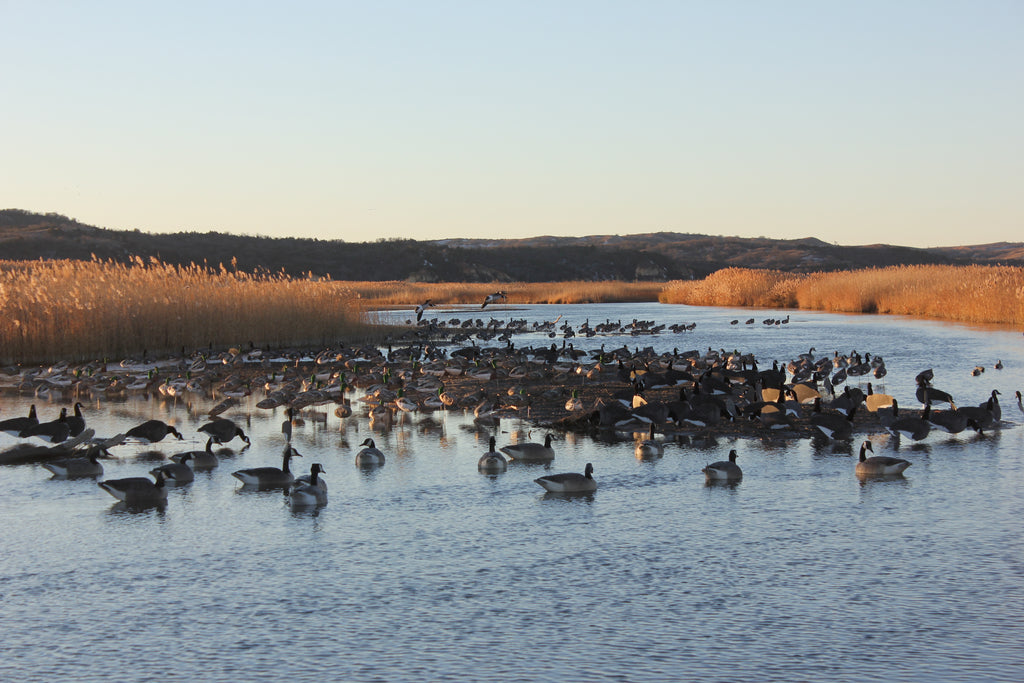

287 comments
[url=https://mypsyhealth.ru/services/vyvod_iz_zapoyay/]запой выведение[/url]
Hi, cool video to watch for everyone [url=https://bit.ly/2PoSCl9]https://bit.ly/2PoSCl9[/url]